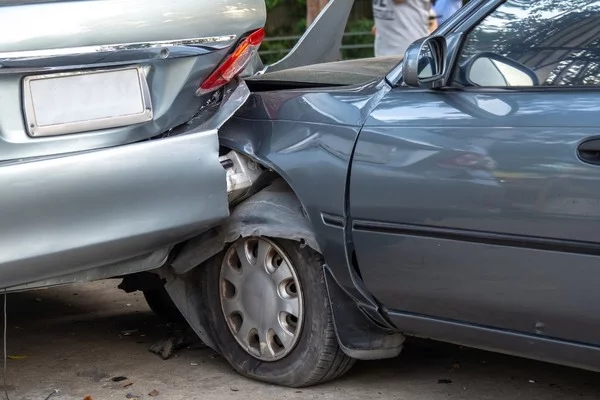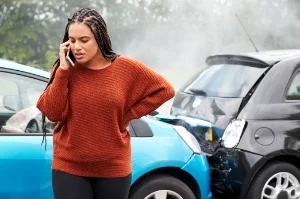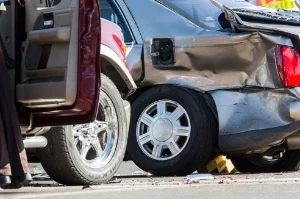
Rear-end collisions are some of the most common types of car accidents in Oregon and throughout the country. In fact, according to the Insurance Information Institute, rear-end accidents are responsible for more than seven percent of all fatal car accidents involving a moving vehicle. However, when drivers leave enough room between their car and the car ahead of them, rear-end accidents are preventable. Thus, in most cases, a rear-end accident occurs because a driver is tailgating.
What Is Tailgating?
Tailgating is the common term used to describe a situation where a driver leaves too little space between their car and the car ahead of them. Car tailgating is incredibly dangerous and is generally considered one of the worst driving behaviors a motorist can pick up.
There are several reasons why tailgating is so dangerous. However, the most common reason why tailgating often results in an accident is that by following a vehicle too closely, the driver in the rear will have too little time to stop if the car in front of them suddenly slows down or comes to a stop.
How Much Distance Should Drivers Give Motorists Ahead of Them?
 While most drivers were taught the “two-second” rule in driver’s education class, it’s a bit of an oversimplification. In reality, drivers should leave room according to the speed they are traveling as well as the type of vehicle they are behind.
While most drivers were taught the “two-second” rule in driver’s education class, it’s a bit of an oversimplification. In reality, drivers should leave room according to the speed they are traveling as well as the type of vehicle they are behind.
Farm Vehicles
Farm vehicles generally have a maximum speed limit of 25 miles per hour. When driving behind a tractor or another piece of farm equipment, drivers should keep at least four car-lengths—or 50 feet—between their car and the vehicle ahead of them.
Snow Plows
Snowplows typically travel at speeds of less than 55 miles per hour. Thus, motorists should leave at least a distance of five car lengths, or about 50 to 70 feet, when following a snowplow. Of course, if the roads are wet or snow-covered, leaving additional space is a good idea.
Cars and Pick-up Trucks
Passenger vehicles, such as cars and trucks, travel at a variety of speeds, depending on the speed limit. However, a good rule of thumb when traveling at 55 mph is to leave at least 16 car lengths between your car and vehicle ahead of you.
Semi-Trucks, Tractor-Trailers, Big Rigs, and 18-Wheelers
When it comes to large commercial vehicles, drivers should leave at least a distance of 20 car lengths when traveling 55 mph. This is because these large trucks are often loaded with cargo that may fall off the back of the truck if the driver slams on the breaks.
Emergency Vehicles
Emergency vehicles are not required to follow the posted speed limit in most cases and may come to a sudden stop. When following an ambulance, fire truck, or police vehicle with its lights or sirens activated, drivers going 55 mph should leave 500 feet of distance between themselves and the emergency vehicle.
Those who leave less than the required amount of room between their vehicle and the one ahead of them are not only violating traffic laws but also increasing the risk of a rear-end collision.
Liability in Oregon Rear-End Collisions
 After a rear-end collision, anyone injured in the accident can file a personal injury claim to recover compensation for their injuries. However, to do so, the accident victim will need to prove that the other driver was at fault for the collision.
After a rear-end collision, anyone injured in the accident can file a personal injury claim to recover compensation for their injuries. However, to do so, the accident victim will need to prove that the other driver was at fault for the collision.
Many drivers have probably heard that in a rear-end collision, the motorist that hits the car in front of them is presumed to be at fault. While this rings true to some extent, it is not a hard-and-fast rule; there are certain situations in which a driver who rear-ends another vehicle is not the at-fault driver. Examples of when the rear-end driver may not be at fault include situations where:
- The driver in front suddenly, and for no reason, brakes without warning;
- The brake lights on the car in front were defective or burnt out; or
- The driver in front cut off the driver in the rear.
However, even in these situations, the driver in the rear may share responsibility for causing the accident. For example, if a driver is distracted, following too closely, or driving aggressively, both motorists may be at fault. This can lead to complications when determining liability.
Oregon law uses a system called “modified comparative negligence” to determine who can recover after an accident. Under Oregon’s modified comparative negligence analysis, anyone injured in an accident can file a claim against another driver involved in the accident, provided the injured person’s fault “was not greater than the combined fault of all” other parties. In plain English, this means that an accident victim may still be able to recover for their injuries as long as they are not more than 50% at fault for causing the accident. For example, assume Joan rear-ended Allen while she was tailgating. However, one of Allen’s brake lights was out, which Joan claimed prevented her from realizing he was slowing down. The jury determined that Allen’s damages were $200,000 and that he was 20% responsible for the collision, with Joan being 80% responsible. In this scenario, Allen would be able to recover $160,000 from Joan ($200,000, less 20%).
Have You Been Injured in an Oregon Rear-End Accident?
If you or someone you love has recently been injured in a rear-end collision, you may be entitled to compensation to help you cover your accident-related expenses. At D’Amore Law Group, we aggressively represent accident victims in all types of car accident claims, including Oregon rear-end collisions. When you bring the dedicated attorneys at D’Amore Law Group onto your team, you can rest assured that you, your family, and your case, are incapable and caring hands. To learn more and to schedule, a free consultation with one of our Washington or Oregon auto accident legal team, give us a call or reach out through our online form.
